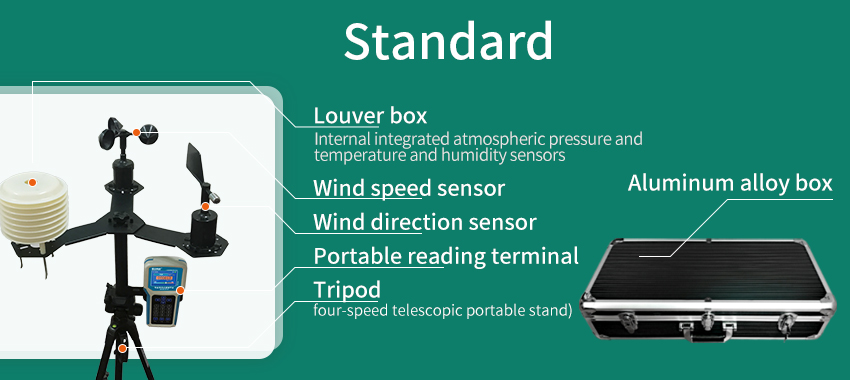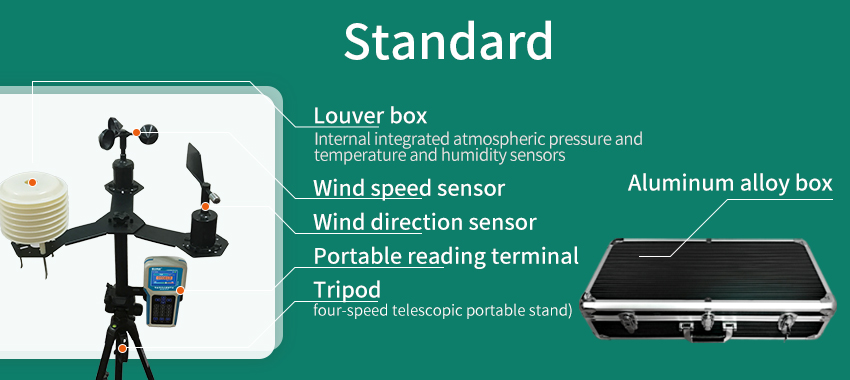Effective resource management is crucial for various sectors, including agriculture, energy, water management, and transportation. Weather conditions play a significant role in resource allocation and utilization. Integrated weather station systems provide valuable data and insights that enable organizations to optimize resource management strategies. In this article, we will explore the importance of integrated weather station systems, their applications in different sectors, and the benefits they bring in terms of resource efficiency and sustainability.
Understanding Integrated Weather Station Systems:
Integrated weather station systems consist of a network of weather stations strategically placed to collect and analyze meteorological data. These systems incorporate advanced technologies and sensors to measure parameters such as temperature, humidity, precipitation, wind speed and direction, solar radiation, and atmospheric pressure. The data collected from these stations is processed and used to inform resource management decisions.
Applications in Agriculture:
a. Irrigation Management: Integrated weather station systems provide real-time weather data that helps farmers optimize irrigation schedules. By considering factors such as rainfall, evapotranspiration rates, and soil moisture levels, farmers can apply water resources more efficiently, reducing waste and ensuring optimal crop growth.
b. Crop Management: Weather station data assists farmers in making informed decisions about crop planting, pest control, and fertilizer application. By aligning their actions with specific weather conditions, farmers can maximize yield potential while minimizing resource inputs and environmental impact.

c. Disease and Pest Control: Integrated weather station systems aid in monitoring conditions conducive to pests and diseases. Farmers can receive alerts and recommendations based on weather data, enabling them to take timely preventive measures. This reduces the need for excessive pesticide use and promotes sustainable farming practices.
Applications in Energy Sector: a. Renewable Energy Production: Weather station data is essential for optimizing the generation of renewable energy, such as solar and wind power. By analyzing solar radiation and wind patterns, energy companies can predict energy production levels, plan maintenance schedules, and ensure efficient utilization of resources.
b. Load Forecasting: Integrated weather station systems help in forecasting electricity demand based on anticipated weather conditions. This enables utility providers to optimize energy distribution, preventing overloads or shortages and ensuring a stable and sustainable power supply.
Applications in Water Management: a. Reservoir Management: Weather station data assists in monitoring rainfall patterns and evaporation rates, helping water authorities manage reservoir levels. By analyzing weather data, they can make informed decisions regarding water releases, storage capacity, and drought response measures.
b. Flood Prediction and Prevention: Integrated weather station systems aid in predicting and monitoring weather conditions that could lead to flooding. This allows for the implementation of timely preventive measures, such as initiating early warning systems, adjusting water flow regulation, and implementing flood control strategies.
Applications in Transportation: a. Road and Air Transport Planning: Weather station data plays a crucial role in road and air transport planning. By analyzing weather conditions, transportation authorities can anticipate and prepare for adverse weather events, optimizing traffic management and reducing disruptions caused by weather-related incidents.
b. Fuel Efficiency: Integrated weather station systems assist in optimizing fuel consumption in transportation. By considering factors like wind speed and direction, vehicle operators can determine the most fuel-efficient routes, reducing emissions and operating costs.
Benefits of Integrated Weather Station Systems:
a. Resource Efficiency: Integrated weather station systems provide real-time, accurate weather data, enabling organizations to optimize resource allocation. This leads to more efficient use of water, energy, fuel, and other resources, reducing waste and promoting sustainability.
b. Cost Savings: By making informed decisions based on weather data, organizations can minimize resource waste and unnecessary expenses. For example, optimizing irrigation schedules based on weather conditions can significantly reduce water usage and associated costs.
c. Risk Mitigation: Integrated weather station systems help in anticipating and mitigating risks associated with adverse weather conditions. By providing timely information, organizations can take preventive measures to protect assets, ensure safety, and minimize financial losses.






